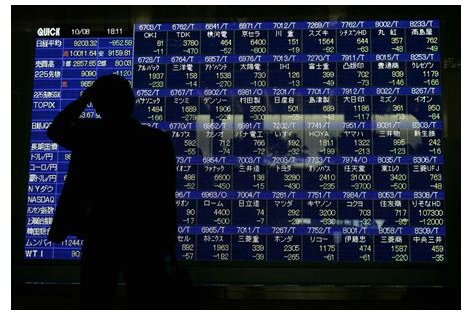About Indicators for a Stock Market Crash
Predicting the stock market is never easy. If there are any stock market indicators that signal a market crash beforehand, most of us miss them. Most often, just when the analysts predict a bull run forever and the market is flush with green investors trying their luck, the market crashes and everyone loses money. Most of us swear that we will never invest in the stock market again, only to return when things start getting better again.
The truth is that no one can predict accurately when the stock market is going to crash or how heavy the crash is going to be. There are, however, some red signals that flash before the market is headed for a meltdown. The market may not crash immediately, but these red signals are an indicator that a crash may be coming.
One such indicator is when the markets are full of optimistic investors. It will feel like the rally will never end and that the stock market is on its way to new heights every day. This will be the time when even laymen who have no knowledge of even the basics of investing will jump in with their money. This is also the time when serious investors will stay away from the market.
It is only the law of nature that anything good cannot go on forever. Usually the market goes through regular ups and downs to correct itself, but if corrections are not done at regular intervals the market swings wildly to the negative after a while and a huge correction occurs.
Mutual Fund Managers and How They Indicate a Stock Market Crash
Mutual fund managers invest in stocks and bonds but they also hold cash sometimes. When they feel that the stocks are overvalued compared to the value of bonds, they sell stocks and invest in bonds. The fund managers compare the value of stocks to that of bonds by comparing the performance of the largest stock and bond indices. As a general rule, whenever the value of stocks were overpriced compared to that of bonds, it was followed by the occurrence of a large stock market correction.
When cash levels in the hands of mutual fund managers are low, they will not have money to purchase more shares and thus drive the value of shares high. Cash-strapped fund managers will also be forced to sell stocks if some investors decide to redeem their mutual fund units. Thus low levels of cash flow indicate an imminent market correction.
The Hindenberg Omen
The Hindenberg Omen, named after the German airplane that crashed in 1937, is the alignment of several technical factors that predict a stock market crash with some accuracy. The Hindenberg omen predicts that when some market conditions are met, the probability that a stock market crash is going to happen is quite high.
In order for the Hindenberg omen to be true, more than 2.5 percent of stocks should reach 52 week highs and lows simultaneously. Some of the stocks would be at their highest value while some others will be at their lowest. When this happens, it means that investors are unaware of what direction the stock market is taking and that the stock market is going through a period of extreme volatility. Such high volatility is not healthy for the market and the probability that the value of shares will plunge somewhere in the near future is very high.
Other three conditions that must be satisfied before a stock market crash to occur are as per the Hindenberg Omen are;
-
The NYSE index should be greater in value than it was 50 trading days ago
-
The McClellan Oscillator should be negative on the same day.
- The new 52 week highs cannot be more than twice the value of new 52 week lows, although the reverse can be true.
If all the above four conditions are met on the same day, there is a greater likelihood of a major stock market decline occurring within the next thirty days.
It is not easy to predict a stock market crash or to identify the indicators of a stock market crash, especially when the market is going through a bullish phase. However being always on the lookout for these signals helps in protecting your wealth.
Resources
- https://www.sutton-associates.net/issues/mtc_2009/mtc_09252009.php
- https://www.safehaven.com/article/3880/the-past-performance-of-the-hindenburg-omen-stock-market-crash-signals-1985-2005
Image Credit: https://www.flickr.com/photos/artemuestra/2941668632/
